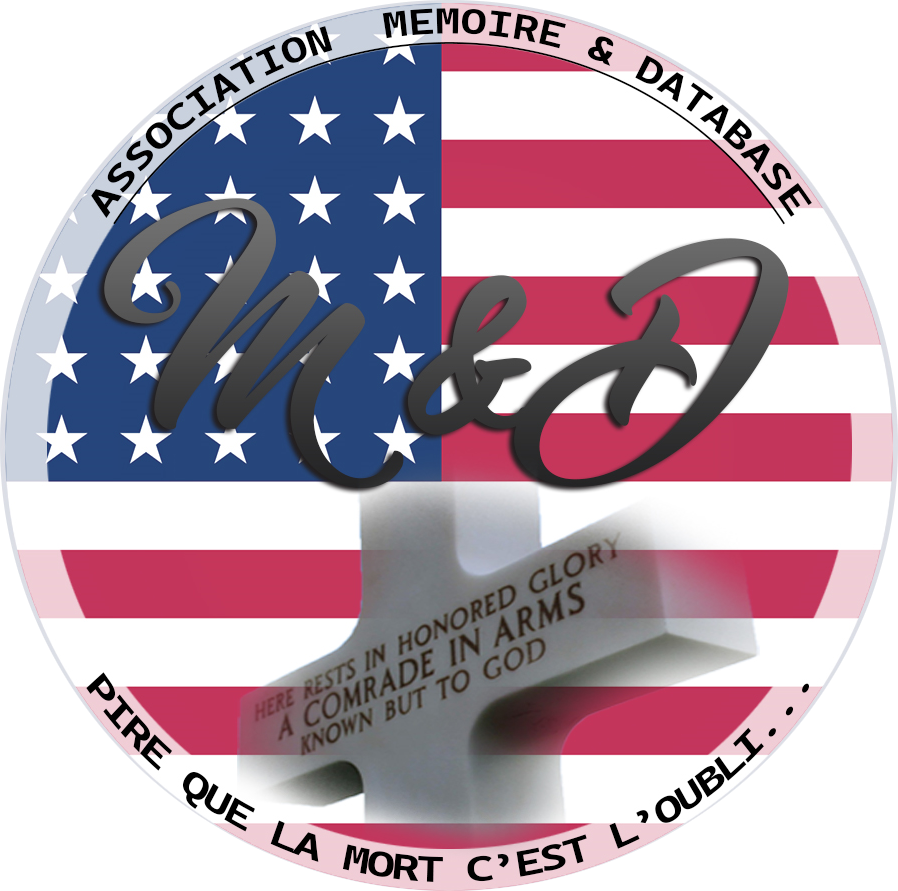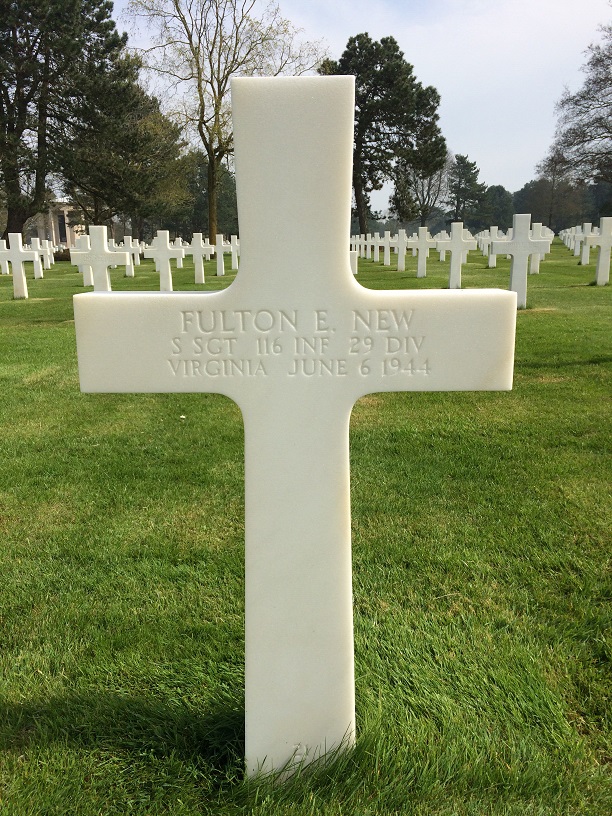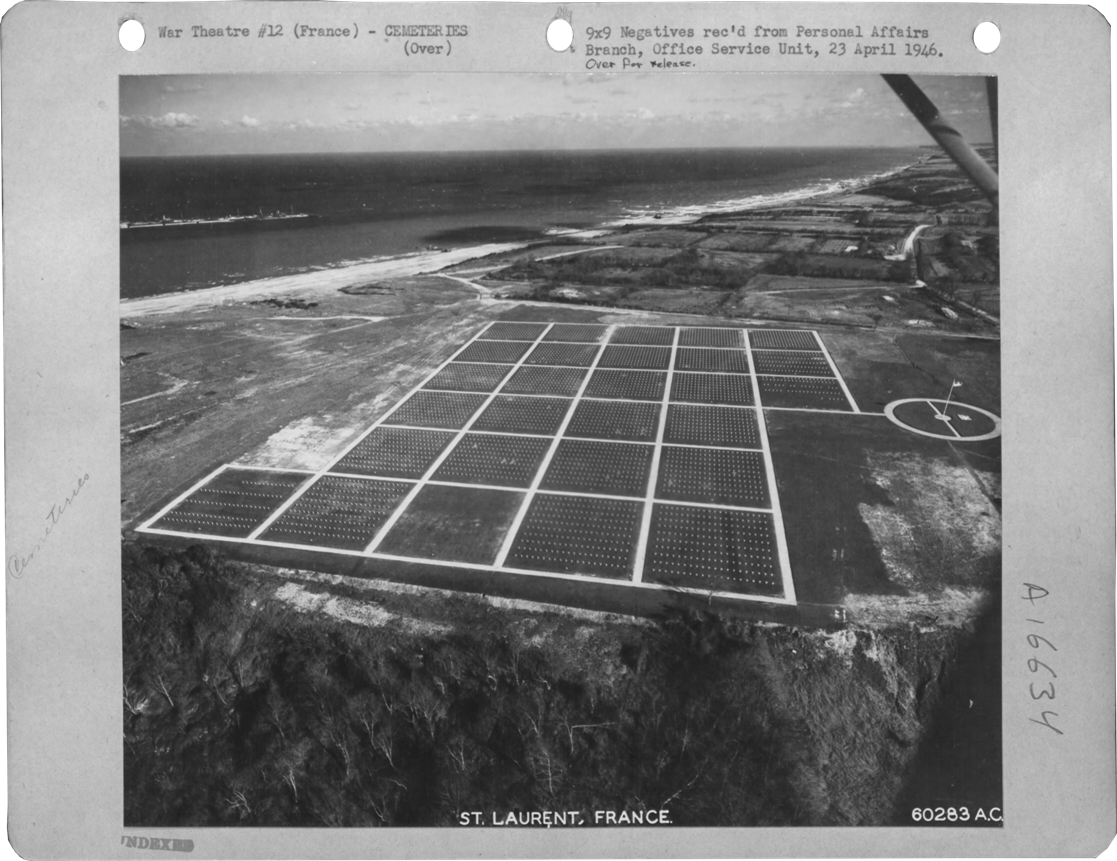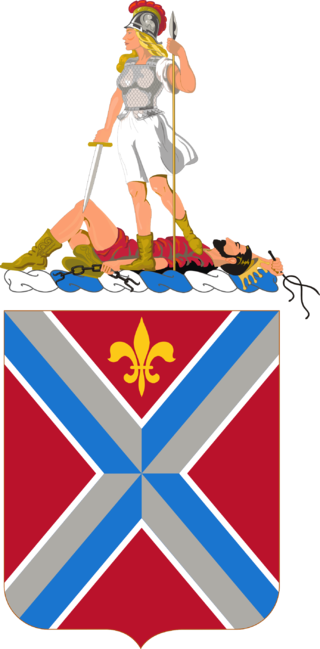|
Fulton Eugene NEW
| ||||||||||||||||||||||||
|---|---|---|---|---|---|---|---|---|---|---|---|---|---|---|---|---|---|---|---|---|---|---|---|---|
|
Source : Fold 3
| ||||||||||||||||||||||||
| NUMBER OF SERVICE | 20364677 | |||||||||||||||||||||||
| AGE | 23 yo | |||||||||||||||||||||||
| DATE OF BIRTH | 1921 Halifax, VIRGINIA | |||||||||||||||||||||||
| ENLISTMENT STATE | VIRGINIA | |||||||||||||||||||||||
| FAMILY | Single | |||||||||||||||||||||||
| RANK | Staff Sergeant | |||||||||||||||||||||||
| FONCTION | Infantry Man | |||||||||||||||||||||||
| JOB BEFORE ENLISTEMENT | Unskilled occupations in manufacture of textiles |  | ||||||||||||||||||||||
| DATE of ENLISTEMENT | 3 February 1941 South Boston VIRGINIA | |||||||||||||||||||||||
| COMPANY | Company F | |||||||||||||||||||||||
| REGIMENT | 116th Infantry Regiment | |||||||||||||||||||||||
| DIVISION | 29th Infantry Division | |||||||||||||||||||||||
| DATE OF DEATH | 6 June 1944 |
Source : Frogman | ||||||||||||||||||||||
| STATUS | KIA | |||||||||||||||||||||||
| PLACE OF DEATH | Dog Red - Omaha Beach | |||||||||||||||||||||||
| CEMETERY TEMPORARY |
CEMTERY TEMPORARY of St Laurent N°3582
| |||||||||||||||||||||||
| CEMETERY | NORMANDY AMERICAN CEMETERY of Colleville | |||||||||||||||||||||||
| GRAVE |
| |||||||||||||||||||||||
| DECORATION |
| |||||||||||||||||||||||
| ||||||||||||||||||||||||
| STORY | ||||||||||||||||||||||||
|
By : fireeye(Fold3 Fulton Eugene New was born 18 May 1920 in Halifax county, Virginia to Adrian Floyd and Ella Baker (Landrum) New; he had one brother and three sisters. His mother died when he was about ten with his father passing when he was 12. He came from a military family, his grandfather fought in the Civil War, ggrandfather in the War of 1812, gggrandfather in the Revolutionary War. He enlisted as a corporal from the National Guard on 3 February 1941 in South Boston, Virginia. Fulton was a Staff Sergeant with Company F of the 29th Infantry Division, 116th Infantry Regiment when it headed for Omaha Beach on 6 June 1944. “F” Company was to be in the first wave landing. Its assigned sector (Dog Red) was directly in front of the strongly fortified German positions. The ramps dropped into waist high or deeper water when the enemy opened fire, instantly laying a cross fire of very heavy, accurate automatic fire from both sides of the beach; the safest way off the boats was to dive off into the water. “F” Company lost many officers and was disorganized due to these losses. Naval and aerial bombardment pounded the German defenses but aerial bombardment was ineffective and naval failed to destroy most of the German gun emplacements. S/Sgt New is buried in the Normandy American Cemetery. He earned his Purple Heart, Combat Infantryman and Marksmanship badges, WW II Victory, American Campaign and Good Conduct medals, Army Presidential Unit Citation and European-African-Middle Eastern campaign ribbons. He may or may not have made it out of the boat, across the beach or up the hill but he gave his all for our freedom – may we always remember. | ||||||||||||||||||||||||
Activated/Activé |
Normandy/Normandie |
| 3 Feb 1941 | Days of Combat/Jour de Combat 242 |
| Casualties/Victimes 20 620 | |
Entered Combat/Entré au combat |
|
| 6 Jun1944 D-Day | |
|
Commanding Generals/Commandants généraux Maj. Gen. Milton A. Reckord (Feb 41 - Jan 42) |
Campaigns/CampagnesNormandy (6 Jun 44 - 24 Jul 44)
|
PLAN DE ROUTE DE LA CAMPAGNE - CAMPAIGN ROUTE MAP |
|
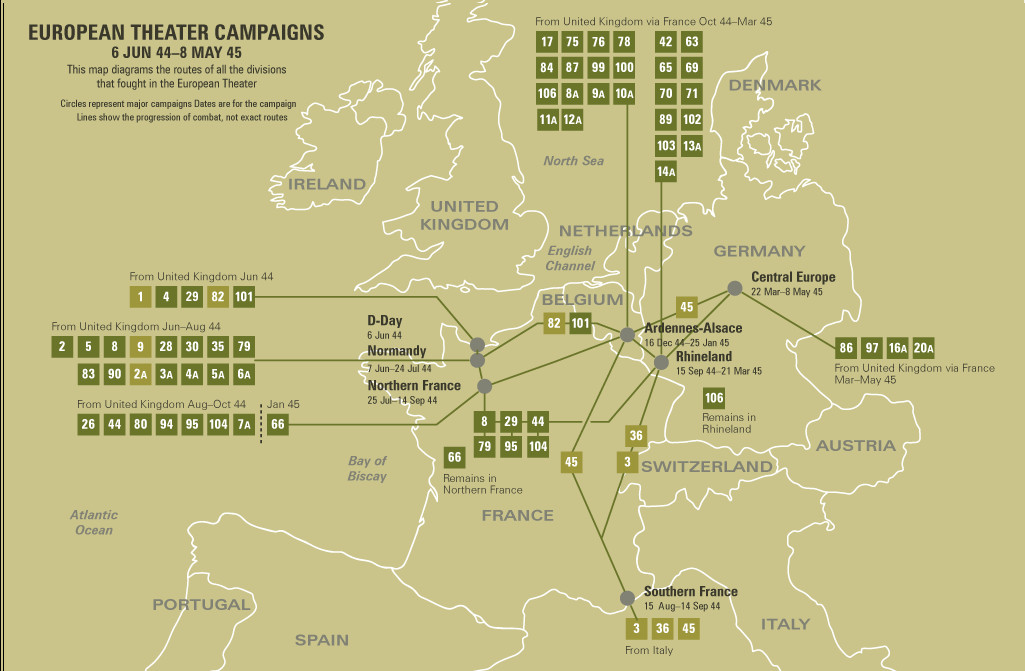 |
|
DIVISION CHRONICLEThe 29th Infantry Division trained in Scotland and England for the crosschannel invasion, October 1942-June 1944. Teamed with the 1st Division, a regiment of the 29th (116th Infantry) was in the first assault wave to hit the beaches at Normandy on D-day, 6 June 1944. Landing on Omaha Beach on the same day in the face of intense enemy fire, the Division soon secured the bluff tops and occupied Isigny, 9 June. The Division cut across the Elle River and advanced slowly toward St. Lo, fighting bitterly in the Normandy hedge rows. After taking St. Lo, 18 July 1944, the Division joined in the battle for Vire, capturing that strongly held city, 7 August. Turning west, the 29th took part in the assault on Brest, 25 August-18 September 1944. After a short rest, the Division moved to defensive positions along the Teveren-Geilenkirchen line in Germany and maintained those positions through October. (In mid-October the 116th Infantry took part in the fighting at the Aachen Gap.) On 16 November the Division began its drive to the Roer, blasting its way through Siersdorf, Setterich, Durboslar, and Bettendorf, and reaching the Roer by the end of the month. Heavy fighting reduced Julich Sportplatz and the Hasenfeld Gut, 8 December. From 8 December 1944 to 23 February 1945, the Division held defensive positions along the Roer and prepared for the offensive. The attack jumped off across the Roer, 23 February, and carried the Division through Julich, Broich, Immerath, and Titz, to Munchen-Gladbach, 1 March 1945. The Division was out of combat in March. In early April the 116th Infantry helped mop up in the Ruhr area. On 19 April 1945 the Division pushed to the Elbe and held defensive positions until 4 May. Meanwhile, the 175th Infantry cleared the Klotze Forest. After VE-day, the Division was on military government duty in the Bremen enclave. |
CHRONIQUE DE DIVISIONLa 29th Infantry Division s'entraîna en Ecosse et en Angleterre pour l'invasion crosschannel, d'octobre 1942 à juin 1944. En équipe avec la 1st Division, un régiment du 29th (116th Infantry) se trouvait dans la première vague d'assaut pour frapper les plages de Normandie. Le 6 juin 1944, débarquant à Omaha Beach, le même jour, face à un feu nourri de l'ennemi, la division s'empara bientôt des falaises et occupa Isigny, le 9 juin. La Division traversa la rivière Elle et s'avança lentement vers Saint-Lô, se battant amèrement dans les rangées de haies de Normandie. Après avoir pris St. Lo, le 18 juillet 1944, la division se joignit à la bataille de Vire pour s'emparer de cette ville fortement occupée, le 7 août. Tournant vers l'ouest, le 29 a pris part à l'assaut sur Brest, 25 août-18 septembre 1944. Après un court repos, la division a déménagé à des positions défensives le long de la ligne Teveren-Geilenkirchen en Allemagne et a maintenu ces positions jusqu'en octobre. (À la mi-octobre, le 116e régiment d'infanterie prit part aux combats à Aix-la-Chapelle.) Le 16 novembre, la division commença sa route vers la Roer, traversant Siersdorf, Setterich, Durboslar et Bettendorf, et atteignant la Roer par la fin du mois. Les combats intenses ont réduit Julich Sportplatz et le Hasenfeld Gut, le 8 décembre. Du 8 décembre 1944 au 23 février 1945, la division occupe des positions défensives le long de la Roer et se prépare à l'offensive. L'attaque a sauté à travers le Roer, le 23 février, et a porté la Division par l'intermédiaire de Julich, Broich, Immerath, et Titz, à Munchen-Gladbach, le 1er mars 1945. La Division était hors combat en mars. Au début du mois d'avril, le 116th Infantry a aidé à nettoyer la région de la Ruhr. Le 19 avril 1945, la division pousse vers l'Elbe et occupe des positions défensives jusqu'au 4 mai. Pendant ce temps, le 175th Infantry a dégagé la forêt de Klotze. Après le jour de la victoire, la division était en service militaire dans l'enclave de Brême. |
| SOURCE INFORMATION & PHOTO | Armydivs.squarespace.com |
|---|
| SOURCE INFORMATION & SOURCE PHOTO | Findagrave.com - Abmc.gov - Aad.archives.gov - fireeye(Fold3.com) |
|---|---|
| PROGRAMMER | Henri, Garrett, Clive, Frédéric & Renaud |


